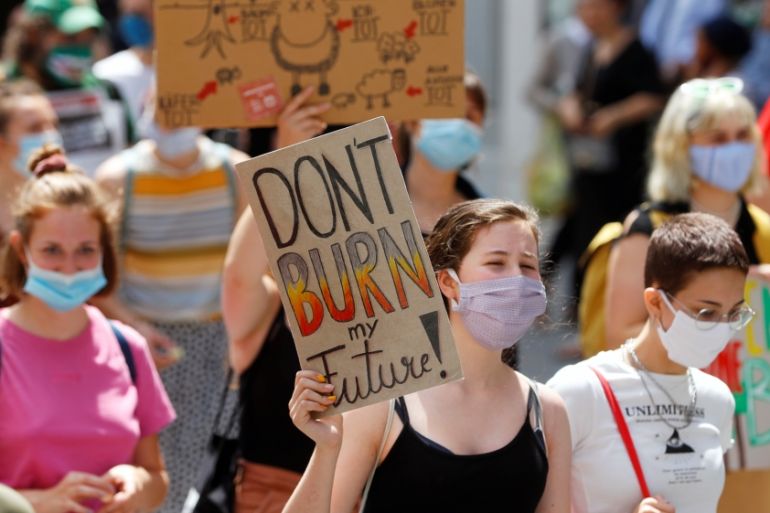UN report: Global warming closing in on dangerous milestone
Earth’s warming has already ‘increased the odds of extreme events that are unprecedented in our historical experience’.

The world is getting closer to passing a temperature limit set by global leaders five years ago and may exceed it in the next decade or so, according to a new United Nations report.
In the next five years, the world has nearly a 25 percent chance of experiencing a year that is hot enough to put the global temperature at 1.5 degrees Celsius (2.7 degrees Fahrenheit) above pre-industrial times, according to a new science update released on Wednesday by the UN, World Meteorological Organization, and other global science groups.
Keep reading
list of 4 itemsThe Last Shark
Canada wildfires spur evacuation orders, warnings: What you need to know
Evacuation orders issued as wildfire grows near Canada’s Alberta oil patch
That 1.5 degrees Celsius is the more stringent of two limits set in 2015 by world leaders in the Paris climate change agreement. A 2018 UN science report said a world hotter than that still survives, but chances of dangerous problems increase tremendously.
The Earth’s warming has already “increased the odds of extreme events that are unprecedented in our historical experience”, Stanford University climate scientist Noah Diffenbaugh said.
|
|
For example, historical global warming has increased the odds of record-setting hot extremes at more than 80 percent of the globe, and has “doubled or even tripled the odds over the region of California and the western US that has experienced record-setting heat in recent weeks”, Diffenbaugh added.
The world already has warmed nearly 1.1C (2F) since the late 1800s, and the last five years are hotter than the previous five years, the report said. The speed-up could be temporary, or it might not be. There is both man-made warming and natural warming from a strong El Nino weather pattern in the past five years, said World Meteorological Organization Secretary-General Petteri Taalas.
“The probability of 1.5 degrees is growing year by year,” Taalas said. “It’s very likely to happen in the next decade if we don’t change our behaviour.”
That is potentially faster than what a 2018 UN report found – that the world was likely to hit 1.5C sometime between 2030 and 2052.
‘Far from on track’
Breakthrough Institute climate scientist Zeke Hausfather, who was not part of the new report, said the document was a good update of what scientists already know. It is “abundantly clear that rapid climate change is continuing and the world is far from on track” towards meeting the Paris climate goals, he said.
Some countries, including the United States and many in Europe, are reducing emissions of heat-trapping carbon dioxide, but Taalas said the world is on a path that will be 3C (5.4F) warmer compared with the late 19th century. That would be above the Paris accord’s less stringent 2C target.
The latest report was the UN’s annual update on “climate disruption” caused by the burning of coal, oil and gas. It highlighted more than just increasing temperatures and rising sea levels.
“Record heat, ice loss, wildfires, floods and droughts continue to worsen, affecting communities, nations and economies around the world,” United Nations Secretary-General Antonio Guterres wrote in a foreword.
The report spotlights unprecedented wildfires in the Amazon, the Arctic and Australia. California is fighting record wildfires as the report was issued.
“Drought and heat waves substantially increased the risk of wildfires,” the report said. “The three largest economic losses on record from wildfires have all occurred in the last four years.”
Carbon dioxide emissions will be down 4 percent to 7 percent this year because of reduced travel and industrial activities during the coronavirus pandemic, but the heat-trapping gas stays in the air for a century, so the levels in the atmosphere continue to go up, Taalas said. And, he said, so will the warming.
So far, this year is the second-hottest on record and has a 37 percent chance of surpassing the global record set in 2016, according to the US National Oceanic and Atmospheric Administration.